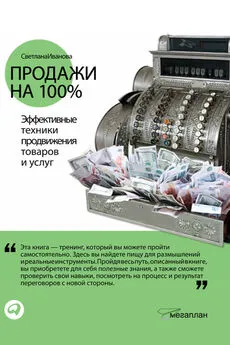Патрик Ренвуазе - Код убеждения [Как нейромаркетинг повышает продажи, эффективность рекламных кампаний и конверсию сайта]
- Название:Код убеждения [Как нейромаркетинг повышает продажи, эффективность рекламных кампаний и конверсию сайта]
- Автор:
- Жанр:
- Издательство:Издательство Питер
- Год:2020
- Город:СПб
- ISBN:978-5-4461-1227-2
- Рейтинг:
- Избранное:Добавить в избранное
-
Отзывы:
-
Ваша оценка:
Патрик Ренвуазе - Код убеждения [Как нейромаркетинг повышает продажи, эффективность рекламных кампаний и конверсию сайта] краткое содержание
Стараетесь быть убедительным, но людей ваши тексты не цепляют? Не секрет, что покупатели принимают решения иррационально, придумывая разумные причины для отказа задним числом, поэтому традиционные модели убеждения и не работают. На помощь маркетологам и продавцам приходит нейромаркетинг, направленный на первичный мозг – древнейшую структуру, которая отвечает за мгновенные и неосознанные реакции.
Опираясь на последние научные данные, Кристофер Морен и Патрик Ренвуазе предлагают модель, которая поможет создать эффективную рекламу, продающие презентации и увеличить конверсию сайта.
Нейромаркетинг – наука убеждать кого угодно, где угодно и когда угодно.
В книге вас ждут: шесть убедительных стимулов, которые обращаются напрямую к первичному мозгу; четыре шага для убеждения любого оппонента; более 30 рабочих кейсов.
Код убеждения [Как нейромаркетинг повышает продажи, эффективность рекламных кампаний и конверсию сайта] - читать онлайн бесплатно ознакомительный отрывок
Интервал:
Закладка:
9. ARF. (2011). Neurostandard collaboration initiative . Available from: www.thearf.org/assets/neurostandards-collaboration.
10. Falk, E. B., Berkman, E. T., and Lieberman, M.D. (2012). From neural responses to population behavior: Neural focus group predicts population-level media effects. Psychological Science 23 (5): 439–445.
11. Lee, N., Senior, C., Butler, M. et al. (2009). The feasibility of neuroimaging methods in market research. Nature Precedings.
12. Kenning, P., Plassmann, H., and Ahlert, D. (2007). Applications of functional magnetic resonance imaging for market research. Qualitative Market Research: An International Journal , 10 (2) 135–152.
13. Wilhelm, P., Schoebi, D., and Perrez, M. (2004). Frequency estimates of emotions in everyday life from a diary method’s perspective: A comment on Scherer et al.’s survey-study “Emotions in everyday life.” Social ScienceInformation 43 (4): 647–665.
14. Morin, C. (2014). The neurophysiological effect of emotional ads on the brains of late adolescents and young adults Media Psychology . 104. Santa Barbara: Fielding Graduate University.
15. Ehrlich, B. (2015). Guys: Here’s why it’s dumb not to give your girl a gift on Valentine’s Day. MTV News , 9 February. Available from: http://www.mtv.com/news/2074362/valentines-day-presents-chocolates-study/.
16. Dehaene, S. (2014). Consciousness and the Brain: Deciphering How the Brain Codes Our Thoughts , 352. New York: Penguin Books.
17. Mendes, W.B. (2009). Assessing autonomic nervous system activity. In: Methods in Social Neuroscience (ed. E. Harmon-Jones and J.S. Beer), 118–147. New York: Guilford Press.
18. Bechara, A., Damasio, H., Tranel, D. et al. (1997). Deciding advantageously before knowing the advantageous strategy. Science , 275 (5304): 1293–1295.
19. Ravaja,N. (2004).Contributions of psychophysiology to media research: Review and recommendations. Media Psychology 6 (2): 193–235.
20. Hebb, D. O. (1949). The Organization of Behavior , 423. New York: Wiley.
21. Gazzaniga, M. S., Ivry, R. B., and Mangun, G.R. (2009). Cognitive Neuroscience: The Biology of the Mind , 3rd ed., 752. New York: W.W. Norton.
22. DeYoung, C.G. and Gray, J.R. (2009). Personality neuroscience: Explaining individual differences in affect, behavior, and cognition. In: Cambridge Handbook of Personality (ed. P.J.C.G. Matthews), 323–346. New York: Cambridge University Press.
23. Lesica, N. and Stanley, B. (2004). Encoding of natural scene movies bytonic and burst spikes in the lateral geniculate nucleus. Journal of Neuroscience 24 (47): 10731–10740.
24. Kolb, B. and Whishaw, I. Q. (2009). Fundamentals of Human Neuropsychology , 6e, 920. New York: Worth Publishers.
25. Berridge, K.C. (2004). Motivation concepts in behavioral neuroscience. Physiology & Behavior , 81 (2): 179–209.
26. Darwin, C. (1872). The Expression of the Emotions in Man and Animals . London, England: John Murray.
27. Ekman, P. and Friesen,W. V. (1971).Constants across cultures in the face and emotion. Journal of Personality and Social Psychology 17 (2): 124–129.
28. PBS (2002). The Secret Life of the Brain. PBS documentary series.
29. McGaugh, J. (2000). Memory: A century of consolidation. Science 287 (5451): 248–251.
30. Ornstein, R. (1991). The Evolution of Consciousness: Of Darwin, Freud, and Cranial Fire: The Origins of the Way We Think , 326. New York: Simon & Schuster.
31. Panksepp, J. (2004). Affective consciousness: Core emotional feelings in animals and humans. Consciousness and Cognition 14 (1): 30–80.
32. Carlson, N.R. (2007). Physiology of Behavior , 9e, 768.Boston, MA: Pearson Education.
33. Wallbott, H. G. and Scherer, K. R. (1986). How universal and specific is emotional experience? Evidence from 27 countries on five continents. Social Science Information 25 (4): 763–795.
34. DeYoung, C.G., Hirsh, J.B., Shane, M.S. et al. (2010). Testing predictions from personality neuroscience: Brain structure and the Big Five. Psychological Science 21(6): 820–828.
35. Glimcher, P.W. (2009). Neuroeconomics: Decision-Making and the Brain , 556. London, UK: Elsevier.
36. Langleben, D.D., Loughead, J.W., Ruparel, K. et al. (2009). Reduced prefrontal and temporal processing and recall of high “sensation value” ads. Neuroimage 46 (1): 219–225.
37. Tamietto, M., Cauda, F., Corazzini, L.L. et al. (2010). Collicular vision guides nonconscious behavior. Journal of Cognitive Neuroscience 22 (5): 888–902.
38. Plutchik, R. (1991). The Emotions , 236., Lanham, MD: University Press of America.
39. Panksepp, J. (1998). The Foundations of Human and Animal Emotions , 481. New York: Oxford University Press.
40. Hess, U. (2009). Facial EMG.In: Methods in Social Neuroscience (ed. E. Harmon-Jones and J.S. Beer), 70–91. New York: Guilford Press.
41. Knutson, B., Rick, S., Wimmer, G.E. et al. (2007). Neural predictors of purchases. Neuron 53 (1): 147–156.
42. Hare, T. A., O’Doherty, J., Camerer, C.F. et al. (2008). Dissociating the role of the orbitofrontal cortex and the striatum in the computationof goal values and prediction error. Journal of Neuroscience 28 (22): 5623–5630.
43. Rossiter, J. R. and Silberstein, R. B. (2001). Brain-imaging detection of visual scene encoding in long-term memory for TV commercials. Journalof Advertising Research 41 (2): 13–21.
44. Tusche, A., Bode, S., and Haynes, J. D. (2010). Neural responses to unattended products predict later consumer choices. Journal of Neuroscience 30 (23): 8024–8031.
45. Draganski, B., Gaser, C., Kempermann, G. et al. (2006). Temporal and spatial dynamics of brain structure changes during extensive learning. Journal of Neuroscience 26 (23): 6314–6317.
46. Maguire, E.A.,Woollett, K., and Spiers, H.J. (2006). London taxi drivers and bus drivers: A structural MRI and neuropsychological analysis. Hippocampus 16 (12): 1091–1101.
47. Mercer, A., Deane, C., and McGeeney K. (2016). Why 2016 election pollsmissed their mark . Washington, DC: Pew Research Center.
48. Schneider, J. and Hall, J. (2011). Why most product launches fail. Harvard Business Review (April).
49. Morin, C. (2015). Why emotional PSA affect the brains of adolescents differently than the brains of young adults. In: Digital Citizenship in the 21st Century Monograph (ed. J. Ohler). Santa Barbara: Fielding Graduate University.
50. Randolph, W. and Viswanath, K. (2004). Lessons learned from public health mass media campaigns: Marketing health in a crowded media world. Annual Review of Public Health 25: 419–437.
51. Petty, R.E., Cacioppo, J.T., and Heesacker, M. (1981). Effects of rhethorical questions on persuasion: A cognitive response analysis. Journalof Personality and Social Psychology 40 (3): 432–440.
52. Brehm, S. and Brehm, J. (1981). Psychological Reactance: A Theory of Freedomand Control , 447. New York: Academic Press.
53. Grandpre, J., Alvaro, E. M., Burgoon, M. et al. (2003). Adolescent reactance and anti-smoking campaigns: A theoretical approach. Health Communication 15 (3): 349–366.
54. Farrelly, M. C., Healton, C. G., Davis, K. C. et al. (2002). Getting to the truth: Evaluating national tobacco countermarketing campaigns. American Journal of Public Health 92 (6): 901–907.
55. Rothman, A. J., Martino, S. C., Bedell, B. T. et al. (1999). The systematic influence of gain- and loss-framed messages on interest in and use of different types of health behavior. Personality and Social Psychology Bulletin 25 (11): 1355–1369.
56. Detweiler, J.B., Bedell, B.T., Salovey, P. et al. (1999). Message framing and sunscreen use: Gain-framed messages motivate beach-goers. Health Psychology 18 (2): 189–196.
57. Schneider, T.R., Salovey, P., Pallonen, U. et al. (2001). Visual and auditory message framing effects on tobacco smoking. Journal of AppliedSocial Psychology 31 (4): 667–682.
58. Schneider, T.R., Salovey, P., Apanovitch, A.M. et al. (2001). The effects of message framing and ethnic targeting on mammography use among low-income women. Health Psychology 20 (4): 256–266.
59. Lang, A. (2000). The limited capacity model of mediated message processing. Journal of Communication 50 (1): 46–70.
60. Lang, A., Zhou, S., Schwartz, N. et al. (2000). The effects of edits on arousal, attention, and memory for television messages: When an edit is an edit can an edit be too much? Journal of Broadcasting & Electronic Media 44 (1): 94–109.
61. Stanovich, K. E. and West, R. F. (2000). Individual differences in reasoning: Implications for the rationality debate? Behavioral and Brain Sciences 23 (5): 645–665; discussion 665–726.
62. Kahneman, D. (2011). Thinking, Fast and Slow , 511.New York, NY: Farrar, Straus and Giroux.
63. Benson, B. (2016). Cognitive bias cheat sheet, simplified. Medium . Available from: https://medium.com/thinking-is-hard/4-conundrumsof-intelligence-2ab78d90740f.
64. Crocker, J. and Park, L. E. (2004). The costly pursuit of self-esteem. Psychological Bulletin 130 (3): 392–414.
65. Greenberg, J., Pyszczynski, T., Solomon, S. et al. (1993). Effects of self-esteem on vulnerability-denying defensive distortions: Further evidence of an anxiety-buffering function of self-esteem. Journal of ExperimentalSocial Psychology 29 (3): 229–251.
66. Kunda, Z. (1990). The case for motivated reasoning. Psychological Bulletin 108 (3): 480–498.
67. Haselton, M.G. and Nettle, D. (2006). The paranoid optimist: An integrative evolutionary model of cognitive biases. Personality and Social Psychology Review 10 (1): 47–66.
68. Weinstein, N.D. (1980). Unrealistic optimism about future life events. Journal of Personality and Social Psychology 39 (5): 806–820.
69. Gladwell, M. (2005). Blink: The Power of Thinking Without Thinking , 296. New York, NY: Little, Brown and Company.
70. Ariely, D. (2008). Predictably Irrational: The Hi⇨ en Forces that Shape Our Decisions , 310. New York, NY: HarperCollins.
71. Mundell, E.J., (2014). Scientists erase, then restore memories in rats. HealthDay (2 June).
72. Cory, G.A., (2002). MacLean’s evolutionary neuroscience, the CSN model and Hamilton’s rule: Some developmental clinical, and social policy implications. Brain and Mind 3 (1): 151–181.
73. McLean, P.D. (1989). The Triune Brain in Evolution: Role in Paleocerebral Functions , 718. New York, NY: Plenum Press.
74. Narvaez, D. (2007). Tirune ethics: The neurobiological roots of our multiple moralities. New Ideas in Psychology 26: 95–119.
75. Cory, G.A. (2002). McLeans’s evolutionary neuroscience, the CSNmodel and Hamilton’s rule: Some developmental, clinical and social policyimplications. Brain and Mind 3 (1): 151–181.
76. Freud, S. (1915). The Unconscious. In: General Psychological Theory (ed. P. Rieff), 116–150. New York: Collier Books.
77. Freud, S. (1930). Das Unbehagen in der Kulture [ Civilization and Its Discontents ]. Wien, Austria: Internationaler Psychoanalytischer Verlag.
78. Freud, S. (1922). Beyond the Pleasure Principle . London, Vienna: Intl. Psycho-Analytical.
Читать дальшеИнтервал:
Закладка:
![Обложка книги Патрик Ренвуазе - Код убеждения [Как нейромаркетинг повышает продажи, эффективность рекламных кампаний и конверсию сайта]](/books/1072703/patrik-renvuaze-kod-ubezhdeniya-kak-nejromarketing.webp)









